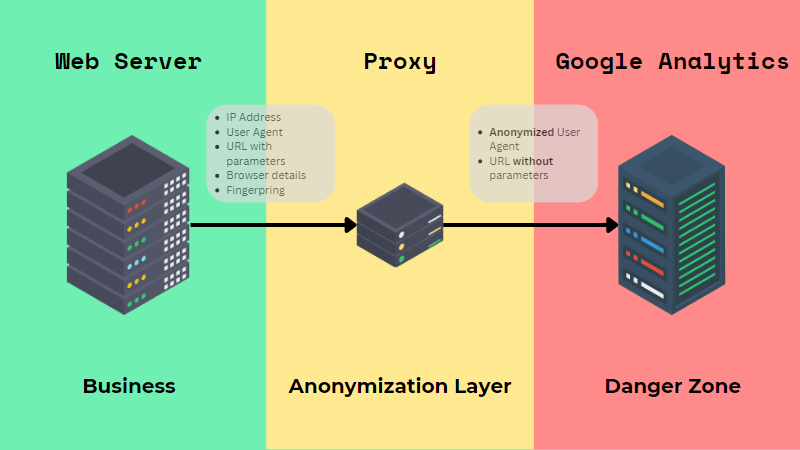Browsing the Complexities of Information Collection Limitations in Google Analytics: What You Required to Know
Underneath its apparently straightforward user interface lie complexities that can impact the precision and reliability of the data it gives. Recognizing the intricacies of data collection limitations in Google Analytics is critical for making notified decisions based on the understandings obtained from the platform.
Data Disparities in Google Analytics
Periodically, data inconsistencies may emerge in Google Analytics, requiring an extensive understanding of the system's ins and outs to properly resolve and fix these inconsistencies. These discrepancies can come from numerous sources, such as execution concerns, information tasting, filters, and even crawler traffic. One usual reason for information inconsistencies is inconsistencies between information accumulated through JavaScript tracking code and data imported from various other sources like Google Advertisements or Search Console.
To resolve these discrepancies, it is essential to first carry out a thorough audit of your monitoring arrangement. Confirm that the tracking code is correctly carried out on all web pages, check for any kind of filters that could be changing the information, and make sure that there are no redirects or other technological issues conflicting with data collection. Furthermore, familiarize on your own with typical pitfalls, such as cross-domain tracking mistakes or misconfigured objectives.
Monitoring Challenges and Solutions
Provided the intricacies of information disparities that can develop in Google Analytics, resolving monitoring difficulties and executing reliable services becomes critical for guaranteeing precise and reputable data analysis. One common monitoring obstacle is precisely tracking cross-device and cross-platform user interactions. Individuals today engage with sites and apps throughout different gadgets and platforms, making it challenging to connect actions to a single user properly. To overcome this, executing user ID monitoring can assist connect interactions across various tools under one individual identifier, offering a more holistic sight of user actions.
An additional monitoring difficulty comes from advertisement blockers and personal privacy regulations, which can impede the collection of precise information (What Data Does Google Analytics Prohibit Collecting?). Solutions to this include implementing server-side monitoring, which bypasses client-side restrictions, and respecting individual privacy preferences by giving clear opt-in mechanisms for information collection

Understanding Tasting in Records
Sampling in reports provides a method for assessing huge datasets successfully while maintaining statistical significance. In Google Analytics, tasting takes place when the volume of data inquired surpasses a specific limit, bring about the system evaluating just a portion of the information to give understandings. While sampling can speed up record generation click to read and decrease processing demands, it is important to understand its effects on the precision and dependability of the outcomes.
When taking care of tested data, it's vital to consider the possible margin of mistake that may arise because of examining just a part of the total dataset. The precision of the understandings originated from experienced records might differ, and users ought to translate the searchings for with care, especially when making data-driven decisions based on these reports.
To navigate sampling in Google Analytics properly, users can discover alternatives such as changing the sampling degree, using personalized record configurations, or leveraging Google Analytics 360 for higher information restrictions and even more exact coverage capacities. By he said comprehending the subtleties of tasting in reports, users can make enlightened choices and attract dependable conclusions from their information evaluation initiatives.
Influence of Cookie Removal on Data

In addition, cookie deletion can alter group and passion information, as Google Analytics counts on cookies to classify customers based upon their surfing patterns. Without this information, marketers may have a hard time to produce targeted campaigns that resonate with their audience. To minimize the effect of cookie deletion, services can encourage users to opt-in for data monitoring, use various other tracking techniques like individual IDs, and regularly keep an eye on data disparities to ensure information honesty in Google Analytics.
Enhancing Information Accuracy With Filters
To enhance the precision and reliability of information in Google Analytics, carrying out filters is an important strategy for boosting data accuracy. Filters enable users to filter with and refine the data accumulated, guaranteeing that exact and just relevant details is consisted of in the analysis.
Filters not just assist in excluding undesirable data yet additionally enable for the customization of views to focus on specific segments or patterns of customer interactions. In conclusion, utilizing filters in Google Analytics is important for boosting data accuracy and guaranteeing that notified choices are made based on trusted information.
Verdict
To conclude, browsing the complexities of information collection constraints in Google Analytics calls for a deep understanding of data inconsistencies, tracking obstacles, tasting in records, the effect of cookie removal, and using filters to boost information accuracy. By addressing these challenges and using ideal options, organizations can guarantee the reliability and precision of their information evaluation for educated decision-making.
One typical reason for information incongruities is disparities in between data accumulated using JavaScript tracking code and information imported from other resources like Google Ads or Browse Console. What Data Does Google Analytics Prohibit Collecting?.
Provided the complexities of data inconsistencies that can arise in Google Analytics, addressing tracking challenges and executing effective options becomes critical for making certain exact and trusted data evaluation. In Google Analytics, tasting happens when the volume of data quized exceeds a certain limit, leading to the system assessing only a portion of the information to offer insights. To mitigate the impact of cookie removal, organizations can motivate customers to opt-in for information tracking, make use of other monitoring techniques like individual IDs, and regularly check information discrepancies to ensure information stability in Google Analytics.